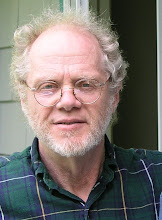Years ago I played in a weekly poker game with some friends. One of them, in addition to being a gifted mathematician, was a compulsive gambler. Not only would he remain in hands long after his chance of winning was virtually nil, but when he finally did fold, he would try to make side bets with others who were also out of the pot as to who would win the hand, or even what cards that person might have. Thus, while he was not directly involved in the "action" -- betting and raising -- he had a stake in the eventual outcome of a hand. Speculators in so-called "derivatives" are a little like this. They can place bets on the behavior of securities without actually owning the securities. In fact, in a very rarified abstraction, they place bets not even on a group of particular securities, but on a "reference" portfolio, none of which either they or the organizer of the bets, have to own. In the case of Goldman Sachs ( = GS) and its Abacus fund, these rarified schemes involve bets on so-called synthetic CDOs (CDO = Collateralized Debt Obligation). Here is my understanding of how this worked. (If you have corrections to what I'm about to say, please use the "Comments" option on this blog to set me straight.)
1. GS or a third-party selected by GS assembles a "portfolio" of bonds or other securities. These may be bundled mortgages, or more standard type bonds. In the case of the latter, the bonds come in "tranches", which specify the (chronological) order in which they are paid off, or in which they become losses. But even if the securities are not actual bonds, GS can simulate these tranches when it assembles this theoretical portfolio.
2. The portfolio is given a overall "rating" depending on the ratings of the individual bonds comprising it. The best bond ratings are AAA, the lowest BBB. A mixed portfolio is rated using a formula depending on the percentages of its bonds having various ratings. I don't know this formula.
This point is where the SEC has charged GS with unethical manipulation of the portfolios and their value. Basically, they never told the people who would eventually "bet" on the portfolio that is was put together by a GS employee who designed them to fail. More below.
3. GS now set up the poker game called a synthetic CDO (synthetic because the portfolio is not actually owned but is "representative") by arranging Credit Default Swaps (CDS's). They brought together two parties: one who thought the portfolio would prosper -- the "long" position -- and one who thought the opposite -- i.e. the "short position" that it would fail. The longs would sell CDS contracts to the shorts. These CDS contracts would pay the purchaser a certain amount of "insurance" if the sample portfolio declined in value; in return, the shorts would pay the longs a certain "premium" for this protection. Of course, these CDS transactions are not really insurance policies, since they are not subject to any of the regulations and protections that go with the insurance industry. In any case, if the portfolio prospers, the longs make money from the "premiums" the shorts pay for the CDS contracts. Inversely, if the portfolio tanks, the shorts are paid compensation by the contracts with the longs -- typically much more than what they have paid for the CDS contracts.
The determination of whether the portfolio declines in value or not -- in other words, whether the CDS's benefit the shorts or not -- is determined not by the actual value of the bonds in the portfolio (their "face" value or what they are obligated to pay) but by the value assigned to them by the market at a certain time. This is called "mark to market" accounting", and has become pretty much standard since the days of Enron's ascendancy.
Here is where GS's creation of the sample portfolio for the Abacus Fund seems to be fraudulent. The sellers of the CDS were told, supposedly, that the sample portfolio was chosen by someone or some group that had no interest in the fortunes of the portfolio. In other words, that the portfolio was simply representative of bonds with a certain (weighted) average rating. In fact, the SEC determined that the portfolio was chosen by John A. Paulson, a prominent hedge fund manager known for his bearish views on the mortgage market. Apparently Paulson was not involved in actual transactions with the Abacus Fund; however, Fabrice Tourre , a VP at Goldman Sachs, set up Abacus, had Paulson choose the portfolio in secret, hawked it to GS clients, then took a short position -- i.e. purchased CDS's from these clients -- on behalf of GS. Thus, knowing the portfolio was rigged to fail, Tourre got some of GS's own clients to sell "insurance" on it while buying this insurance himself for his company. GS's clients -- which included all sorts of investors and retirement funds -- lost heaps, while GS itself made a billion dollars or more on Tourre's machinations. Or so claims the SEC -- which I'm inclined to believe, as are most experts outside of GS (see, for example, this opinion).
Friday, May 7, 2010
Subscribe to:
Post Comments (Atom)

No comments:
Post a Comment
Note: Only a member of this blog may post a comment.